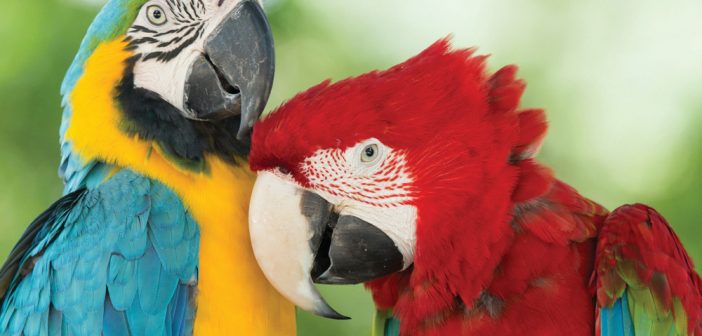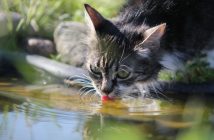by Emily Strong, CPBC, CPBT-KA
I walked into my bird room the morning after adopting a new parrot – a Congo African Grey whose name, I had been told, was Austin. As I approached his cage I said, “Good morning, Austin.” He cocked his head to one side, gazed thoughtfully at me, then replied, “Birdasaurus.” I laughed: “Did you just say ‘Birdasaurus?’” Austin vigorously nodded his head as he shouted, “Birdasaurus! Birdasaurus! Birdasaurus Rex!” Later that day I called his previous owner and told her the story, asking if I was indeed hearing him correctly. “Oh yeah,” she replied, “One day after he bit my husband, my husband called him a Birdasaurus Rex. That’s what he’s been calling himself ever since.”
Anecdotes like this abound in the avicultural community, but up until recently the notion that parrots were capable of anything other than mimicry was thought to be anthropomorphism. This belief is so pervasive that another word for imitation is “parroting.” In fact, we were so sure of this that I remember my linguistics professors in college emphatically stating that one of the things separating humans from non-humans is our ability to use and understand language. Certainly, if you haven’t lived with parrots and had full conversations with them before, it would be easy to believe that. They are, after all, master mimickers. Many of them do tend to chatter meaninglessly for hours a day, arbitrarily throwing words and phrases into a steady stream of whistles and other noises. Most of them reserve their overt attempts at communication for trusted friends rather than strangers or casual acquaintances.
Science, however, has recently begun to side with those of us who have lived and worked with parrots our whole lives, and have always been certain beyond doubt that parrots are capable of so much more than just mimicry. Ornithologists have known for some time that bird vocalizations served at least a rudimentary purpose: alerting to danger, attracting mates, and – in the case of the over 360 parrot species around the world – communicating their comings and goings to the rest of their flock via “contact calls.” When Dr. Irene Pepperberg started her famous research with Alex the African Grey, though, she set out to discover whether parrot communication was more than just rudimentary. What she found was remarkable: Alex had the conversational capabilities of a two year old human child, the problem-solving skills of a five year old, and was capable of basic arithmetic and creating novel phrases. This means he could take words he knew and rearrange them into a new phrase in order to convey a concept.
Dr. Pepperberg’s research was understandably met with some skepticism, but several years later Dr. Karl Berg and several of his associates studied contact calls in more detail and discovered that wild parrots name their young, and then as the young grow up, they will sometimes rename themselves. This research indicates that parrots have an awareness of self and a preference for self-identity. More recently and perhaps more astonishingly, researchers from Kyoto University and Leiden University have discovered that parrots are also capable of understanding and using basic grammatical structure.
The implications of this cumulative research are huge: parrots are highly intelligent, sensitive, social beings who sometimes choose to use human language to more effectively communicate with humans. They are not the tie-dyed robots humankind once thought them to be. Whether or not they choose to use human language or their own, they are capable of understanding a great deal more than we thought possible.
Even though certain species or even whole genera – such as African Greys, Amazons, Eclectus, and Macaws – are known to be “good talkers,” most species of parrots can use human language to some extent. Whether or not they choose to is a different story. Throughout my career, I have worked with many parrots who eschew English in favor of their own language, and yet are fully capable of getting their meaning across with a series of whistles and warbles.
And then there are birds like Birdasaurus. That’s his name now, by the way. I figured he should be allowed
to name himself.
Emily Strong, CPBC, CPBT-KA, is a certified behavior consultant and animal trainer with 26 years of experience in the field of animal welfare. Through her company, From Beaks To Barks, she offers behavior consults, group classes, service/therapy/ESA training, and continuing education classes and workshops.




